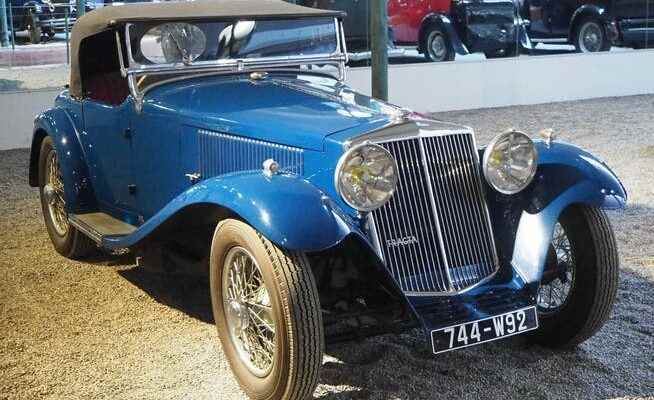The Parisian engineer Jean Albert Grégoire (1899-1992) experimented with his front-wheel drive project until he had created a successful design for the four-cylinder Tracta with special joints in 1926 and started series production – eight years before the construction of the first Citroen Traction Avant .
The 1930 six-cylinder Tracta E had working front-wheel drive.
When Karl Benz and Gottlieb Daimler developed their horseless three- and four-wheel vehicles with rear-wheel drive gas engines in 1886 and began marketing them, it was not long before other designers thought of realizing several advantages with a compact, space-saving front-wheel drive. Entirely new technical challenges arose for hobbyists, inventors and visionaries: superfluous cardan shafts, a lower center of gravity, weight reduction, optimized interior space, improved road holding and a gearbox geared directly to the engine.
The three Viennese brothers Franz, Heinrich and Carl Gräf also developed such plans. As early as 1897, they had built two prototypes of a car with a water-cooled four-cylinder, front-wheel drive and four-speed gear transmission in their workshop, but the engine, which was located above the front axle, was too heavy for the fragile drive joints, which were not up to the strain. The front-wheel drive concept developed by the Gräf brothers was not ready for series production; but they patented it in 1900.
The Gräf & Stift brand later became famous as a purveyor to the imperial and royal court of luxury cars. The Austrian Crown Prince and Princess were shot dead by a Serbian assassin in Sarajevo on June 28, 1914 in a Gräf double phaeton, triggering the First World War.
However, not a single detail of this Phaeton is reminiscent of the front-wheel drive ambitions of Gräf’s founding years: the four-cylinder engine with a displacement of 5.8 liters and 32 hp had rear-wheel drive as well as rear-wheel and cardan brakes and reached a top speed of 75 km/h. This car is exhibited in the Military History Museum in Vienna.
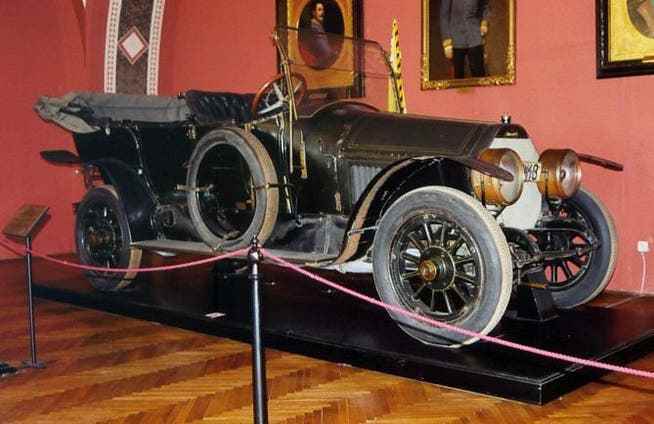
The Gräf & Stift, where the heir to the throne Franz Ferdinand and his wife Duchess Sophie von Hohenberg were murdered in 1914.
How complex and for the designers the way to front-wheel drive was mostly in vain was demonstrated by French car manufacturers such as Noël Bénet and Korn et Latil, who struggled with their experiments with small De Dion and Aster engines for a year and ended their front-wheel drive activities again in 1901 . The front axle, which was loaded with too many functions and was too heavy, was overwhelmed.
The failure strengthened many skeptics, who were reluctant to learn, in their simple world view that the technical refinements of an automobile could never master the multi-task talents of a horse: Pulling and steering the carriage at the same time – that would never be possible with a heavily loaded and overstrained front-wheel drive, they claimed Technology-unfriendly horse lovers.
It was not until 1926 that the Frenchman Albert Grégoire and his Tracta brand showed how, with ingenious technical understanding and almost missionary zeal, fascinating cars suitable for everyday use could be built that also performed well in racing and functioned without breakdowns.
However, it is still worth taking a look at the exotic mobiles and designers who, as technology pioneers and unorthodox inventors, exerted a great deal of influence on subsequent designers in this development phase. The groundbreaking Citroën Traction Avant is one of them, as is the sensational DS – but they were only built from 1934 and 1955.
Christie’s gigantism
The ambitious American inventor, engineer and designer John Walter Christie (1886-1944) and his company “Iron Works” in Manhattan focused on the construction of cannons, turrets and other armament components for US and British warships. But he was also fascinated by automobiles, which he found far too small and slow.
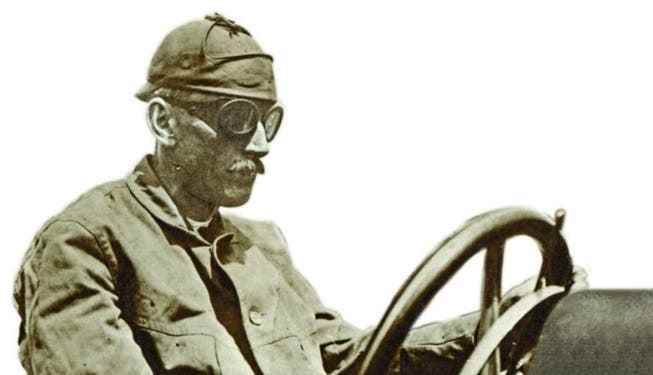
John Walter Christie was obsessed with front-wheel drive.
In addition, Christie opted for front-wheel drive, from which he expected maximum power without too complex a technical effort. A grotesque irony in the history of technology, because engines have seldom been designed as complex as those of the unorthodox engineer and racing driver Christie. With his “Direct Action Motor Car Company” he relied on gigantic engines and unusual “brute force” concepts from the very beginning. Its four-cylinder V-engine from 1904, installed transversely between the front wheels, had a capacity of 20 liters and delivered 70 hp.
With his homemade car, the American immediately took part in car races such as the Vanderbilt Cup Races and even the 1905 French Grand Prix in Dieppe, where he retired after four laps with clutch problems. Christie’s five custom designs were never mass-produced. Obsessed with the idea of front-wheel drive, he also tried extreme technical solutions: why not put a front engine in the front and a second one in the rear? In 1905, he set a speed record over one mile (97 mph = 144 km/h) with this twin-engine «Flyer».
In 2016, the American online magazine “The Old Motor” reported in a seven-part series on this eccentric technician and racing driver, who was less interested in series production of his cars than in marketing his patents. In addition, he was always looking for new challenges and designed fire engines, tractors and taxis, all of which were designed for front-wheel drive.
Grégoire developed Tracta in series production from 1926
Jean Albert Grégoire (1899-1992) had studied law at the Paris Ecole Polytechnique and had two academic degrees. But he was so fascinated by the technical challenges of automotive engineering that he teamed up with his friend Pierre Fenaille, a well-to-do oil magnate, after college to advance the development of front-wheel drive.
Grégoire founded the Tracta company in 1926 and developed the four-part Tracta universal joint, which made the synchronous acceleration and steering of a front-wheel drive vehicle possible. As a designer and racing driver, he saw the construction of his Tracta sports car as the ultimate test. He was concerned with maximum efficiency, optimal use of space and long-distance suitability, which he wanted to put to the test at the 24 Hours of Le Mans with his transversely installed, water-cooled four-cylinder engine with 70 hp.
He competed successfully at Le Mans with his Tracta teams in 1927, 1928 and 1929, although the Tracta’s small 1.1 liter and 1.5 liter SCAP engines competed against the behemoth 6.6 and 4.4 Bentleys liters had no chance. The legendary Bentley Boys around Tim Birkin did conquer the first four places in 1929 – but Grégoire and his teams still finished ninth and tenth and had pushed his front-wheel drive idea forward with a powerful boost. He also had Cozette compressors installed for extra power.
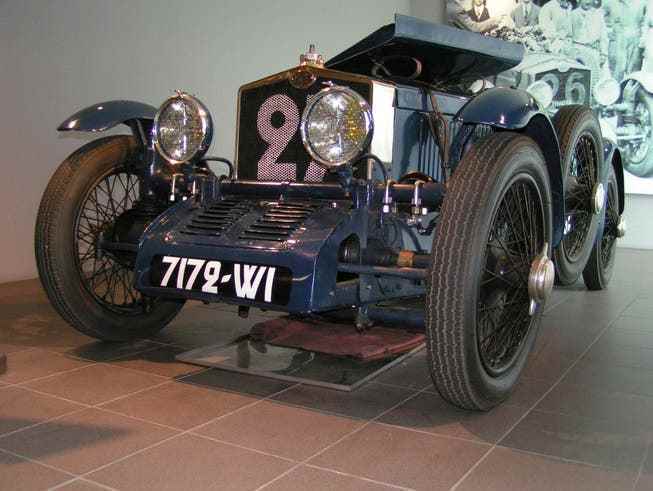
Tracta A, class win and 7th overall at the 1929 Le Mans 24 Hours.
After this success, Grégoire optimized his model range and also offered 1.6-liter four-cylinders, Continental six-cylinders with 2.7 liters and 3.3-liter Hotchkiss engines. By then, however, he had already envisaged new projects and, after producing 140 cars, gave up the manufacture of Tactra cars in 1934. Because he could consider his front-wheel drive mission to have been successfully completed.
As a result, Grégoire devoted himself to lightweight construction for the development of the Panhard Dyna, designed front-wheel drive sedans together with Hotchkiss and was commissioned by the French research team SOCEMA in 1952 to develop gas turbines for installation in futuristic concept vehicles that had a maximum speed of 200 km /h should reach.
This caused quite a stir, but after the turbine hype, which was also promoted in the USA with Chrysler and GM developments and in England with Rover with a lot of hot air, this development project was also discontinued in Paris a year later been. The extremely hot turbine exhaust gases had proven to be too dangerous and unmanageable.
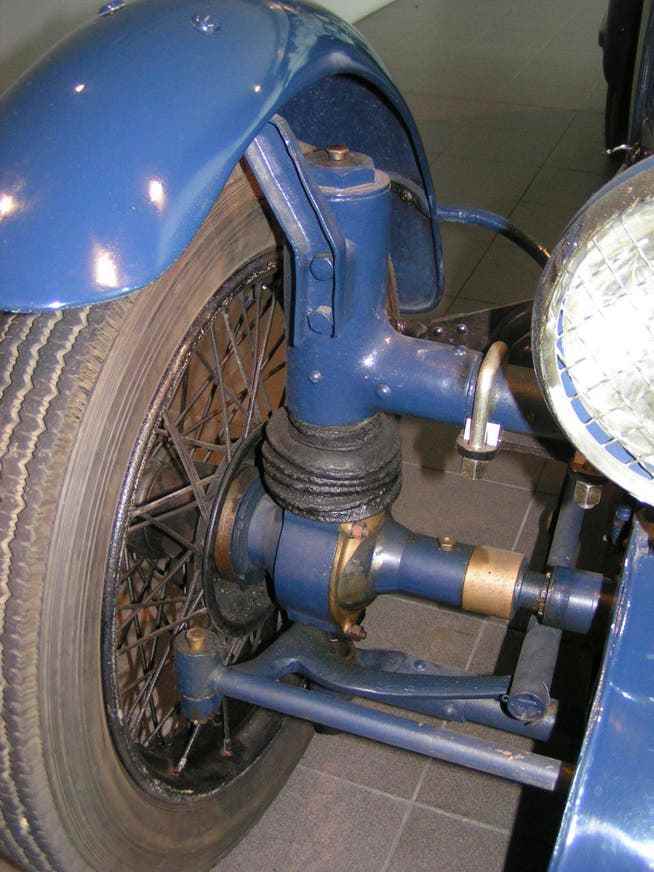
Jean Albert Grégoire patented the front-wheel drive concept.
The ingenious designer Grégoire was always on the lookout for new ideas and visions, which he usually implemented successfully. But in his later phase, in which he worked as a novelist and crime writer, he also wanted to cause a stir with critical revelations about alleged machinations and intrigues of former competitors – which he did not succeed in doing.
However, Grégoire was able to market his licenses to optimize front-wheel drive with great success to other car companies such as DKW, Adler, Stöwer and Citroën. Front-wheel drive is now more common than rear-wheel drive. In the long run, however, this is likely to become irrelevant, since the electric drive, which will probably dominate in the future, can electronically select the driving mode for two or four wheels, depending on individual needs.
